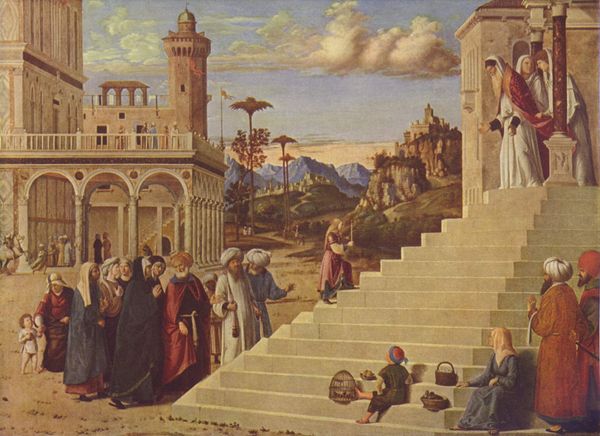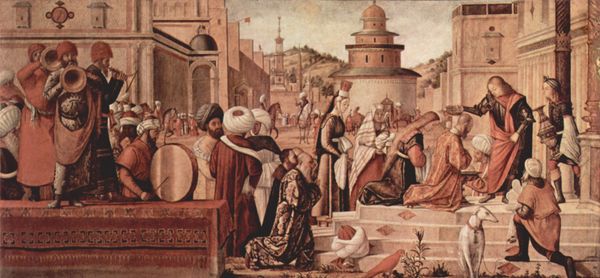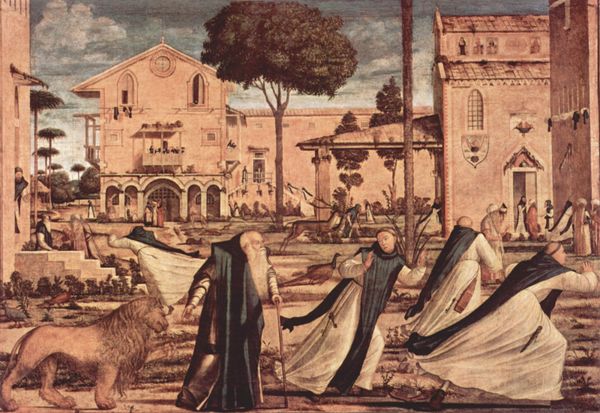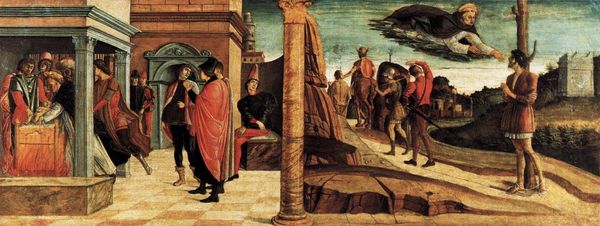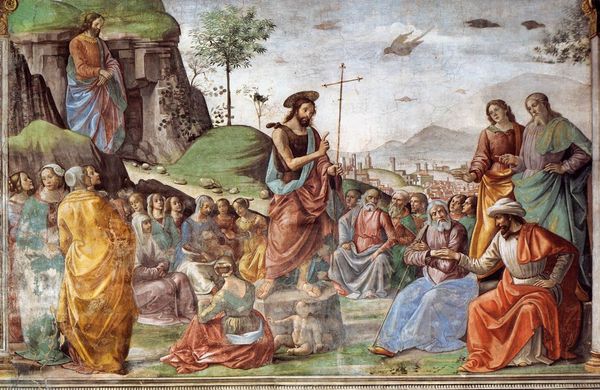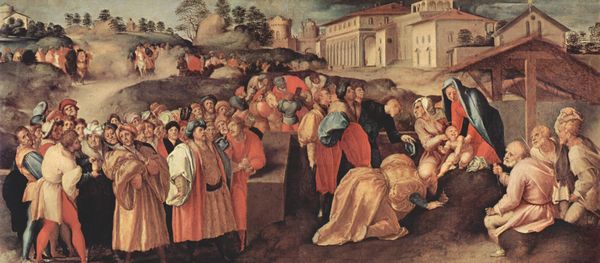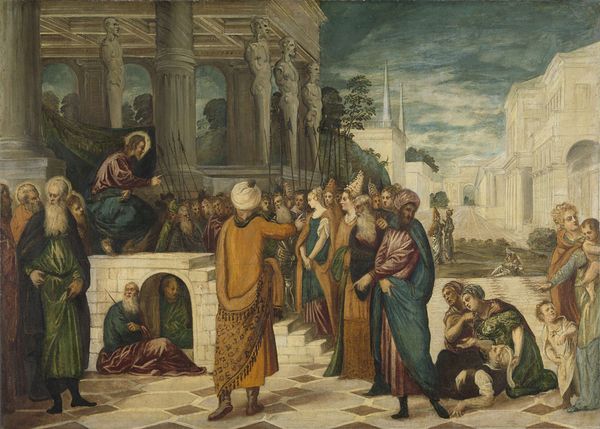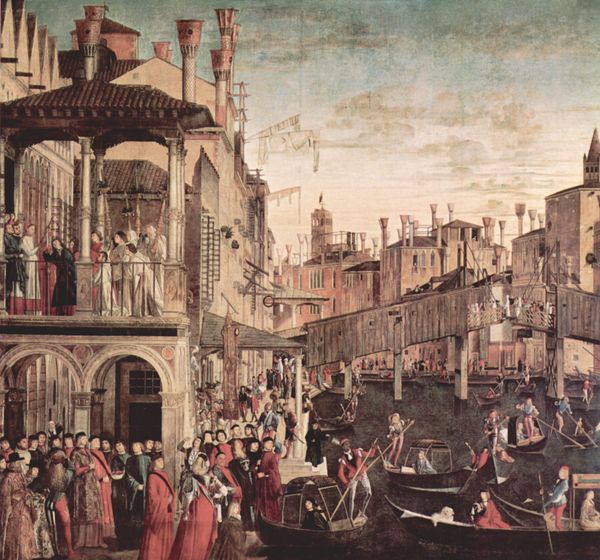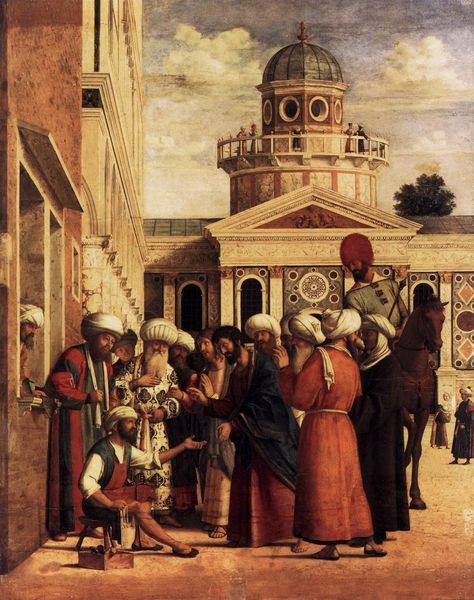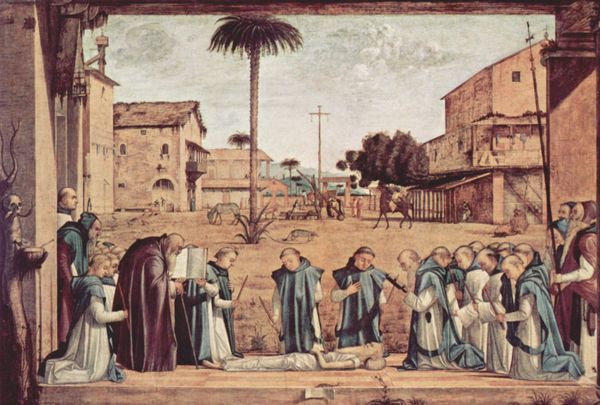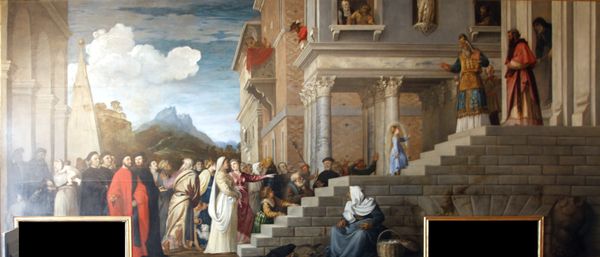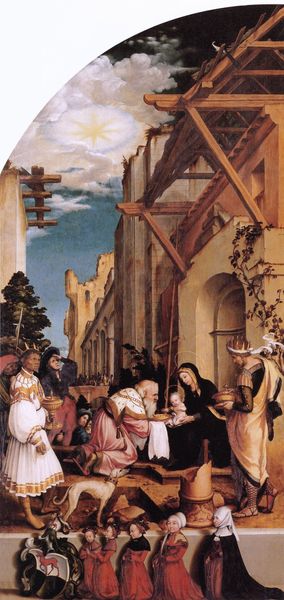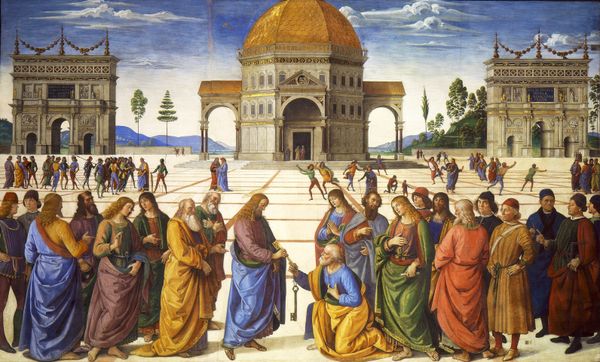
painting, oil-paint
#
narrative-art
#
painting
#
oil-paint
#
oil painting
#
christianity
#
history-painting
#
italian-renaissance
#
early-renaissance
Dimensions: 152 x 195 cm
Copyright: Public domain
Curator: Before us is Vittore Carpaccio's "St. Stephen is Consecrated Deacon," painted around 1514. Editor: It's such a placid scene! The colour palette is restrained, but I notice the use of light to pick out details. Curator: The consecration of Saint Stephen, a pivotal moment in the early Church, is visually transported to a distinctly Venetian setting. Look at the architectural backdrop; those aren't the streets of Jerusalem, but surely of Venice! The deliberate merging of biblical narrative and contemporary setting reflected the church’s desire for legitimacy within society. Editor: Right, I do see how the details become signifiers within Carpaccio’s arrangement. Did the setting shape your reaction to it? To me it feels like a stage play. Curator: The painting reflects its era's humanist movement by connecting religious stories to viewers' contemporary lives and experiences. It served as a reminder of the Church’s omnipresence in the lives of its Venetian observers. Consider the details— the figures' attire, their expressions, all rooted in daily Venetian experience, allowing immediate connection with the narrative. Editor: That connection gives us the chance to analyze it further: notice how figures are meticulously placed within this constructed reality, to evoke solemnity, and reinforce the church’s message? The spatial relations really do serve to deepen the painting's symbolic intent. Curator: Exactly, but it is still about power. Note the strategic placement of religious figures. It projects their authority onto the urban fabric, claiming space. What does this act of placement then communicate? The church sought not just devotion but civic integration, a visible testament to its power. Editor: Now I’m convinced about your view of the painting. Considering its subtle coloring and the positioning of those buildings, I realize Carpaccio prompts viewers of the day to reconsider their faith with a newer awareness of art as an ideology. Curator: In effect, “St. Stephen” is more than just religious depiction; it’s a public declaration, skillfully merging piety, place, and power. Editor: I appreciate now seeing it through a historic lens. Analyzing this painting with history reveals profound insight into religious authority in early 16th-century Venice.
Comments
No comments
Be the first to comment and join the conversation on the ultimate creative platform.
